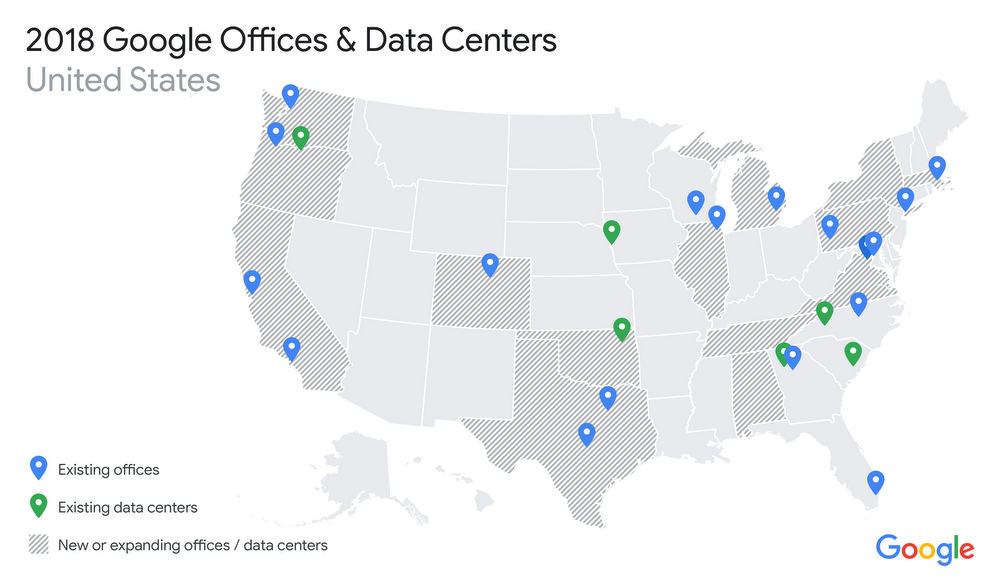Regions across Europe have changed throughout the decades, and so has the local job market. Technology companies can help address the challenges brought on by this change: through training people in digital skills, improving connectivity and by continuing to build large-scale data center facilities across Europe. To explore the impact of these data centers, we hosted an event, “Global technology, local jobs,” along with Debating Europe, today in Brussels.
At this event we heard from EU Commissioner for Regional Policy Corina Crețu, regional development experts, and the consultancy Copenhagen Economics, who just published new research (commissioned by Google) on how investment in data centers, renewable energy and fiber is impacting Europe's regions.
Since 2007, Google has spent EUR 3.2 billion on constructing and operating data centers in Saint-Ghislain-Mons, Belgium; Hamina-Kotka, Finland; Dublin, Ireland; and Eemshaven, Netherlands. We’ve also spent EUR 1.1 billion on European fiber networks to connect them, and thanks to signing power purchase agreements, enabled EUR 1 billion investment in renewable energy projects.
Copenhagen Economics crunched the numbers on what this means for citizens, and found that Google’s data center and fiber investments have supported economic activity in Europe by EUR 5.4 billion in gross domestic product in total for the 10-year period from 2007 to 2017. Those same investments supported full-time 6,600 jobs per year on average over the decade, with a significant number of those jobs related to construction, with at peak moments more than 1,500 workers a day working on building one site. You can read the whole report on our data center site.
Moreover, when Google grows, these communities grow—we support and work with local business, education, social enterprises and culture. At today’s event, Matt Brittin, Google’s president for Europe, the Middle East and Africa, shared the story of Frederic, who works in our Saint-Ghislain-Mons data center in Belgium. He grew up in Quievrain, studied in Mons, lives with his wife and children nearby and recently oversaw the construction of a new solar facility at the site—the second largest in Wallonia—which was built by a local firm.
“I’m sharing Frederick’s story because it demonstrates one of the things that make me proudest about our data centers,” Matt told attendees. “The impact they have on the people who work in and around them. This is about investing in real people and communities to help build a better future for everyone.”
Frederic’s story is far from unique. Google currently employs thousands of people across Europe, the Middle East and Africa, in 35 countries, 56 offices and speaking 67 different languages. And that local presence makes all the difference, as Copenhagen Economics discovered. "A large and well-known company like Google investing in a region can influence others to to do so as well, as they can tap into existing talent, suppliers and resources. As European Commissioner Corina Crețu said at the event, "It's not true that automation only causes job losses—it is also important to highlight that tech can bring jobs and help local communities.”
Google is committed to Europe, and we want to do more support communities like the 4,400 children who have received coding and robotics lessons through Hanze University of Applied Sciences in Groningen, near our Eemshaven data center, thanks to our community grants program. And there are many more stories from community members near our data centers about their experiences of having Google in their backyard.
The Digital Single Market is essential in order for everyone in Europe to harness the benefits of tech. We look forward to the innovations that will be encouraged by its completion, and will continue our work to reinvigorate and invest in regions across the continent.













